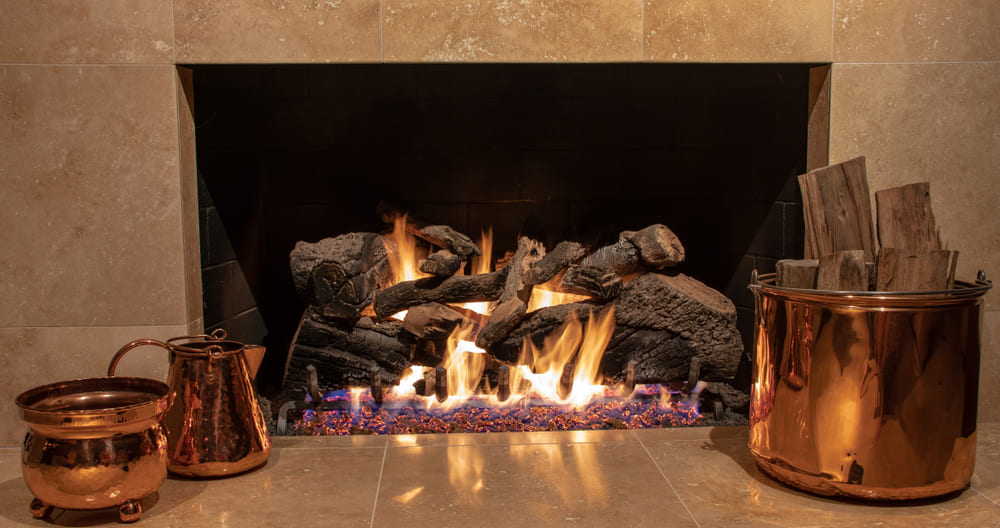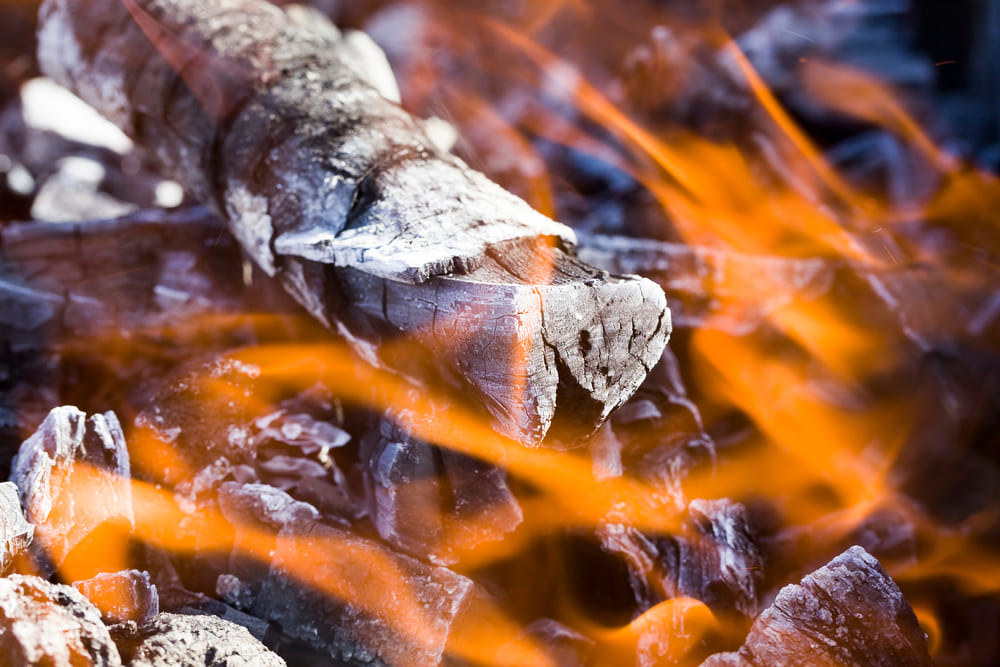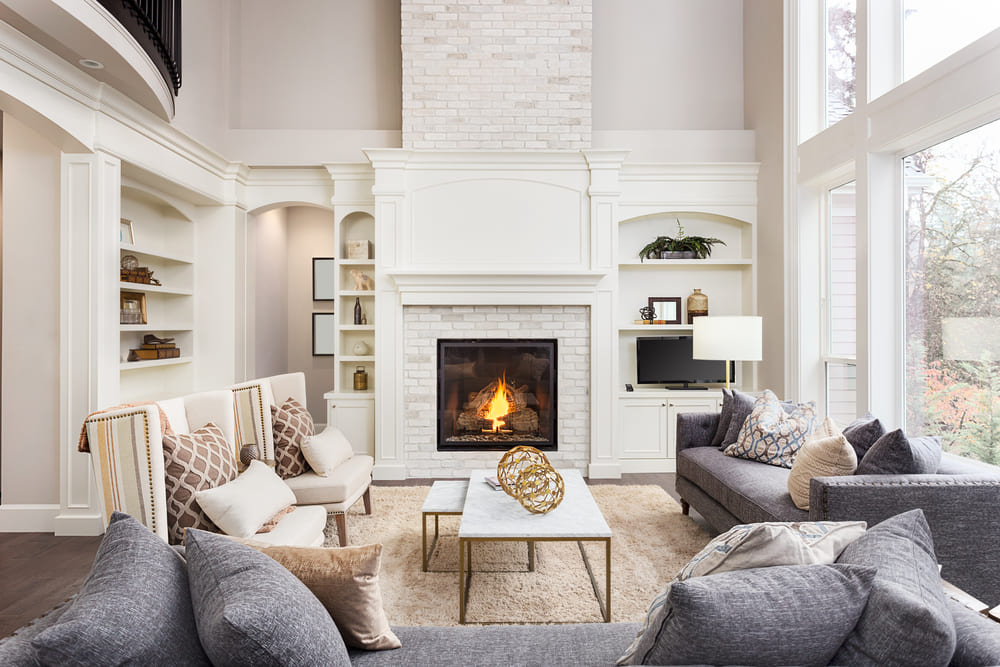Fireplaces provide a vital function to many households in Australia and they come in many forms. The most popular varieties of fireplaces are wood and gas, which come with advantages and disadvantages. This is why you need to consider your choice of fireplace carefully due to the differences that they may have.
These distinctions could result in major inconveniences if you’re not expecting them and if they are unsuitable for your home. With that being the case, it’s worth discussing how wood fireplaces differ from gas ones and why these pros and cons are worth noting.
Key Differences Between a Wood and Gas Log Fireplace
There are several key differences between a wood and gas log fireplace that you need to keep in mind. Chief among them is the source of fuel, which itself can have a huge impact on you and your home.
In the case of wood fireplaces, the fuel source is kindling. This can be firewood, coal, or other materials that can be burned. For those who have never had to deal with wood fireplaces before, this can be a tricky aspect. To start with, you can’t use just any kindling and the conditions must be right.
For a start, the wood must be dry or it won’t light properly and will emit too much smoke. You also need to think about the size of the kindling since you can use both whole or chopped logs depending on the firebox.
For gas fireplaces, the flames are fueled by natural gas or something equivalent. This then makes it necessary to be close to a source of natural gas in order to have this type of fireplace in your home.
Aside from the fuel source, another key difference between wood and gas fireplaces is the maintenance. While wood does tend to be more atmospheric, it also comes with more soot and ash compared to gas.
Key Features of Wood Fireplaces
For those who have never seen an actual wood fireplace, the structure might not seem too complicated. However, there can be quite a large disparity between different types of wood fireplaces, from the materials used to the design of the fireplace itself.
It’s worth noting that a wood fireplace is not necessarily the version that is ensconced into a wall. It can be in the middle of the room, as part of the facade, or even an open brazier. In most cases, however, these fireplaces do have several things in common.
These include:
- Fire and ash containment
- Ventilation
- Heat safety measures
- Grate, grille, or barrier
- Sealing cover
Wood fireplaces can also be made of bricks, clay, concrete, steel, and stone.
Key Features of Gas Fireplaces
Gas fireplaces and wood fireplaces share many things in common, but they can differ in terms of several key features. Aside from the fuel source, gas fireplaces come with temperature controls, thermostats, pilot lights, combustion systems, and a gas line.

There are several types of gas fireplaces, as well. These are:
- Gas log fireplace sets
- Inserts
- Built-ins
The first two basically just take traditional wood fireplaces and turn them into ones that run on gas. Gas log fireplace sets do come with burners, some fake logs, and a grate, though. Meanwhile, inserts are self-contained and can just slide right into the firebox of the traditional fireplace.
Built-in gas fireplaces would have to be the most versatile varieties thanks to their many forms. They can function in a similar manner to wood fireplaces with the firebox and the chimney but their placement is more versatile.
The wall and frames can also either enclose the fireplace from all sides or just three. This enclosure can also take on several forms and use different materials. Heat-resistant glass is a favourite, along with grilles with large gaps or holes.
Major Considerations When Choosing Fireplaces
You have to carefully consider your options when you are trying to decide which kind of fireplace you want for your home. While they can still be replaced later if you change your mind, this will still be a costly investment.
You need to take the features of the two types into account and think about what your own home needs. Both do have their charms, but for a modern home with the right options, one can be better than the other.
Among the points that will need your consideration are:
- Location
- Property design
- Target atmosphere
- Access to gas line
- Possible placement
- Costs
- Efficiency
- Maintainance
- Ease of access
- Health impact
When it comes down to which type of fireplace has more positives than negatives when considering modern household needs, the health aspect is one of the biggest. If the air circulation and ventilation are lacking, the smoke and fumes could cause respiratory problems.
Small room sizes could also cause issues with the installation of the fireplace, which would then cause a fire hazard.
Then there is the cost to consider, which includes installation, cleaning, maintenance, and repair. The wrong fireplace for your home could mean higher expenses than necessary.
Health Concerns When Choosing Fireplaces
One of the biggest health concerns related to fireplaces is the microscopic particles that are released, especially wood fireplaces. Burning wood releases soot and results in ash. If not properly ventilated, these particles can accumulate in the air to dangerous levels.

As for gas fireplaces, improper installation or maintenance, as well as inadequate cleaning can lead to potential carbon monoxide poisoning. This is why gas fireplaces need to be inspected on a regular basis.
Conclusion
When it comes to your choice of home heating systems, choosing between a wood or gas fireplace requires careful consideration. Your decision can affect your health, finances, and even your home’s property value. Your choice will also affect the fireplace installation company that you need to contact.
Some service providers specialize in one type of fireplace over the other. This goes for installation, maintenance, cleaning, and repair. Gas fireplaces require different skill sets and training to work on and the same goes for wood fireplaces. You will need to make sure that you end up engaging the services of the right company for safety and quality of work.

